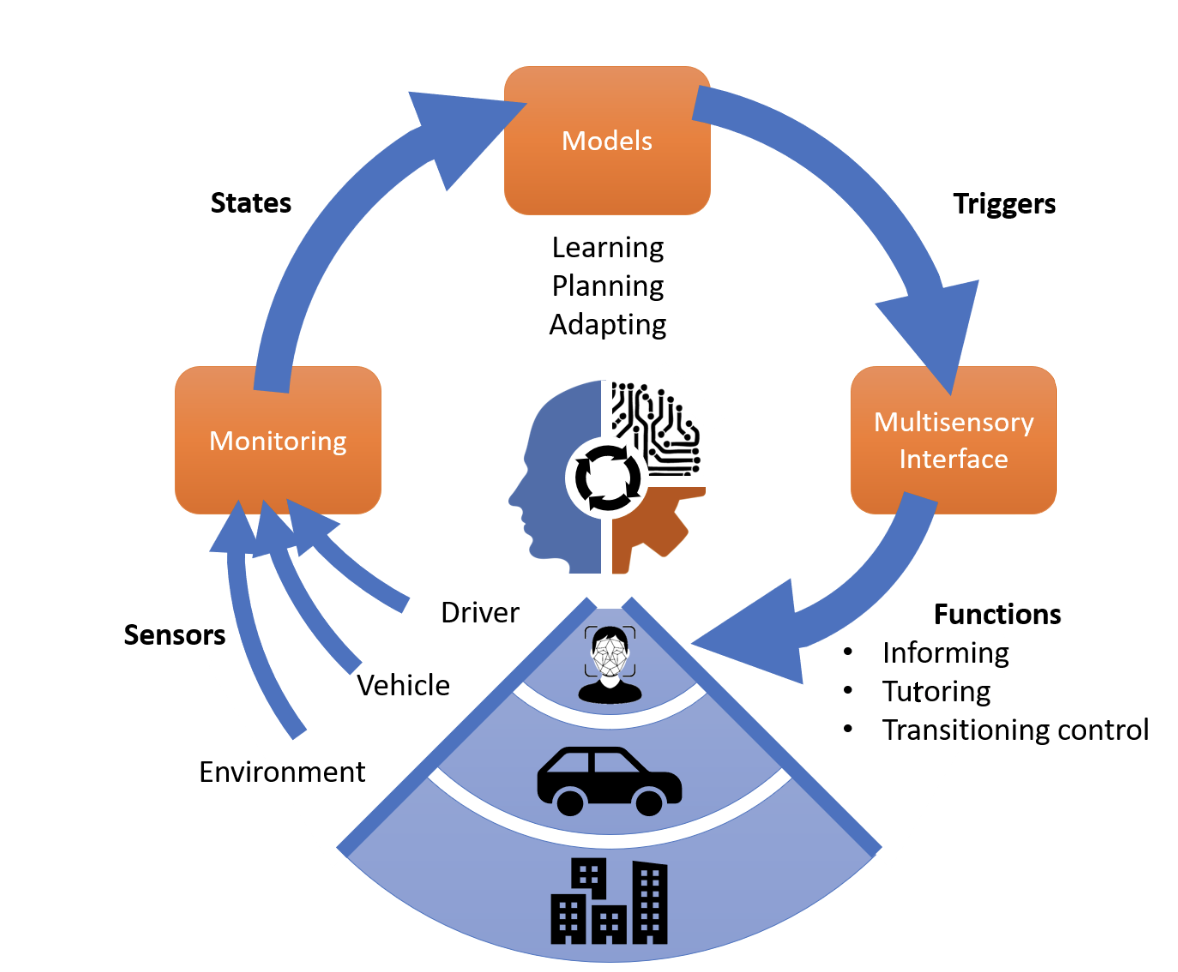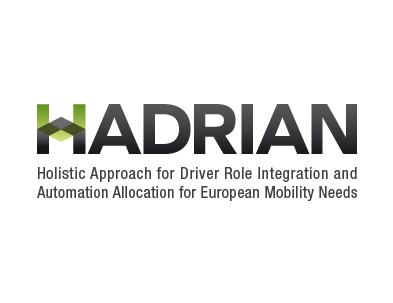Hadrian
In a car or truck that has automated driving capabilities, it is hard to know as a human driver when you need to take over control. Currently, there exist different levels ranging from a lot of human intervention necessary, to almost fully automated mobility.
The Holistic Driver Role Integration and Automation Allocation for European Mobility Needs (HADRIAN) project represents a human-centered revolution in the definition of driver roles in automated driving (AD). It puts human mobility needs within the larger future European framework of shared, individual, and freight mobility. The goal is to conceptualise holistic driving system solutions based on realistic arrangements of vehicle and infrastructure capabilities matched with human capabilities. Ultimately, this must achieve safe, acceptable, and trustworthy use of AD functionality and transitions between different AD levels.
Driving with machines
HADRIAN focuses on fluid human machine interfaces (f-HMI) that take environmental and driver conditions into account to provide adaptive signals, information, or transfer authority that the driver needs to safely transition between different AD levels. For this f-HMI, real-time driver status models, novel sensor and information fusion methods & algorithms, as well as decision logic algorithms for contextually sensitive interventions and information offerings will be developed. A (fluid) tutoring system will provide a step-wise training of the driver and enable calibrated levels of trust.
In this project, researchers of Industrial Design Engineering, TU Delft will design a fluid interface focusing on control transition (from Automated to Manual driving) situation and for each scenario of the three personas (Elderly, Truck driver, office worker) created in the project.

Safer
HADRIAN ultimately aims to increase the safety of AD level transitions by 85 % compared to traditional, nonadaptive HMIs, and achieve acceptability of 95%. Nineteen human participant studies, covering a broad range of driver demographic and cultural factors, will explore and evaluate f-HMI concepts and driver monitoring methods in driving simulators and field demonstrations. The latter will be performed using the full range from light to larger passenger vehicles and freight vehicles/trucks (L, M, and N class). Eventually, the HADRIAN demonstrators and effectiveness metrics will be translated into guidelines and recommendations for OEMs world-wide for human-systems integration of safe, acceptable and trustworthy AD technologies and functionalities.
HADRIAN partners:
- Delft University of Technology
- Faculty of Industrial Design Engineering
- Faculty of Mechanical, Maritime and Materials Engineering
- Kompetenzzentrum – Das Virtuele Fahrzeug, Forschungsgesellschaft MbH (Germany)
- Universidad de Granada (Spain)
- National Technical University of Athens (Greece)
- VDI/VDE Innovation + Technik GmBH (Germany)
- Fundacion Tecnalia Research & Innovation (Spain)
- Rheinische-Westfaelische Technische Hochschule Aachen (Germany)
- Bundesanstal für Strassenwesen
- Commissariat a L ‘Energie Atomique et aux Energies Alterntieves
- Institut für Innovative Energie & Stoffaustauchsysteme
- Nervtech, Rasiskave in Razvoj Doo
- Asfinag – Autobahnen- un Schnelstrassen-Finanzierungsactiengesellschaft
- AVL List GmbH
- Ford Otomotiv Sanayı Anonim Sirketi
- University of Surrey
- Paris-Lodron Universität Salzburg
René van Egmond
- +31 (0)15 27 88324
- R.vanEgmond@tudelft.nl
-
Room C-2-290
Present on: Mon-Tue-Wed-Thu
"Understanding the experience of product sounds leads to gratifying the human ear."

Elmer van Grondelle
- +31 (0)15 27 89488
- e.d.vangrondelle@tudelft.nl
-
Room C-3-220
"I am not here to teach you. You are here for my entertainment."






